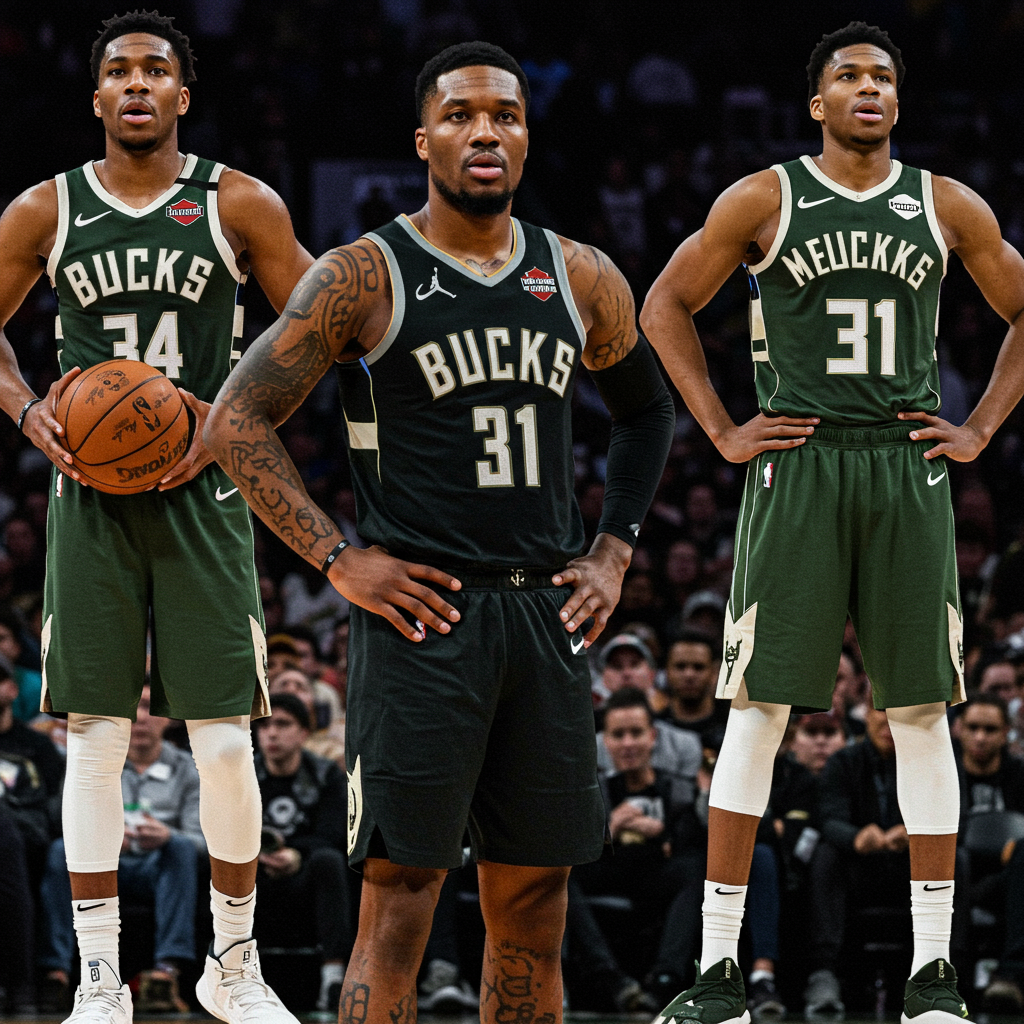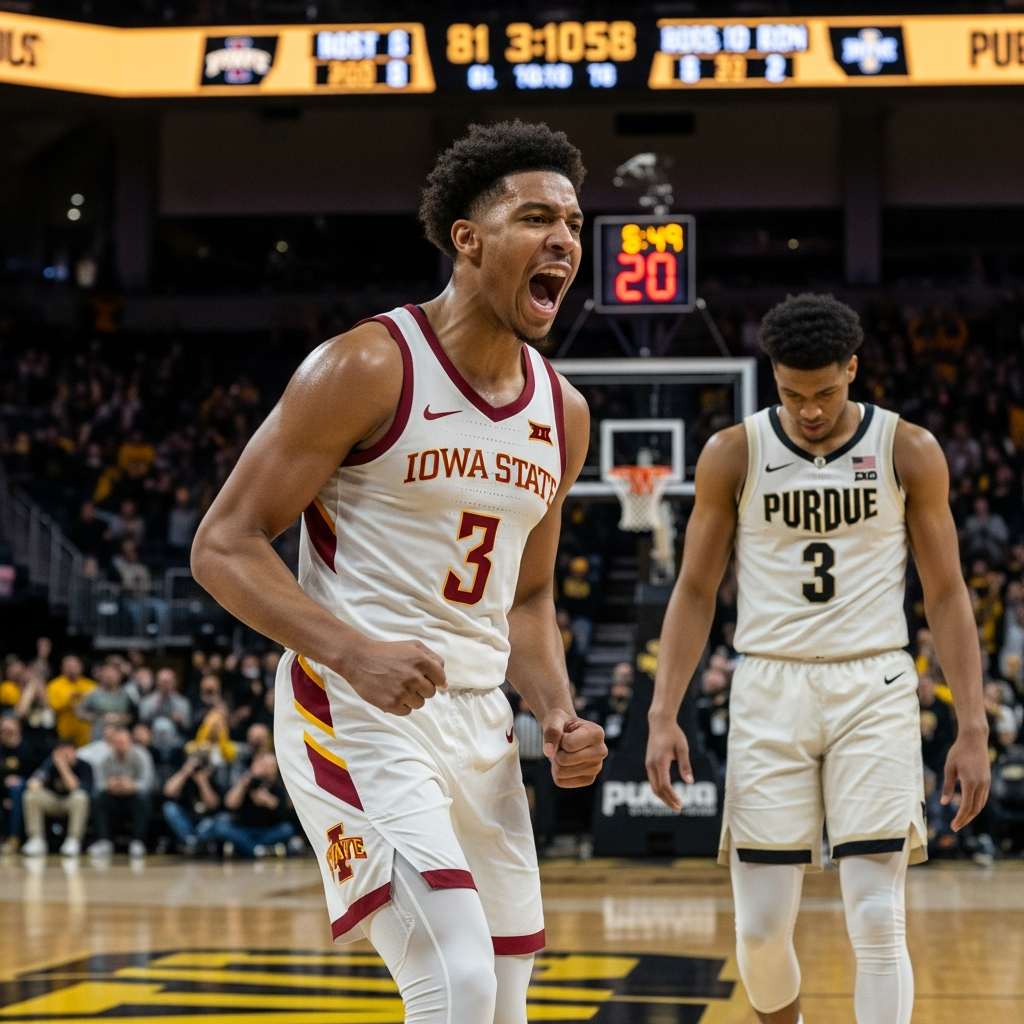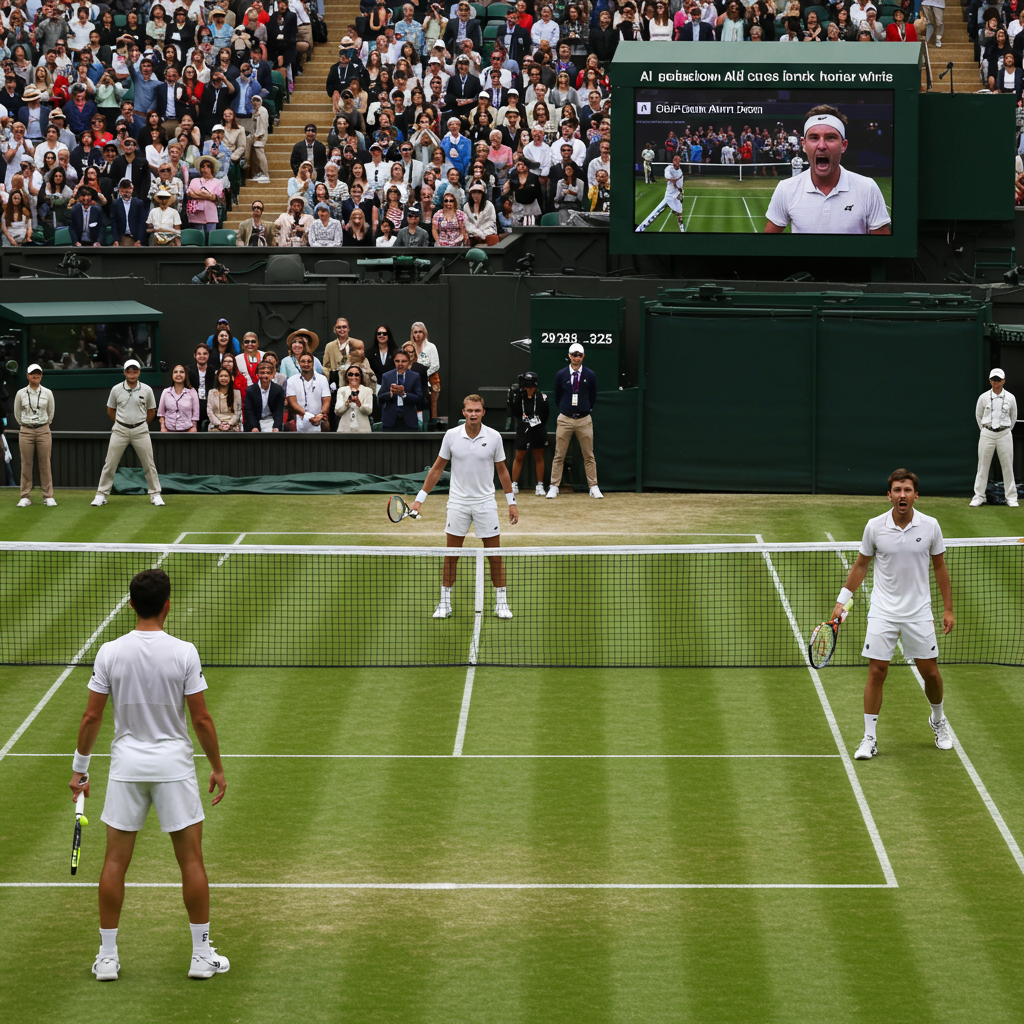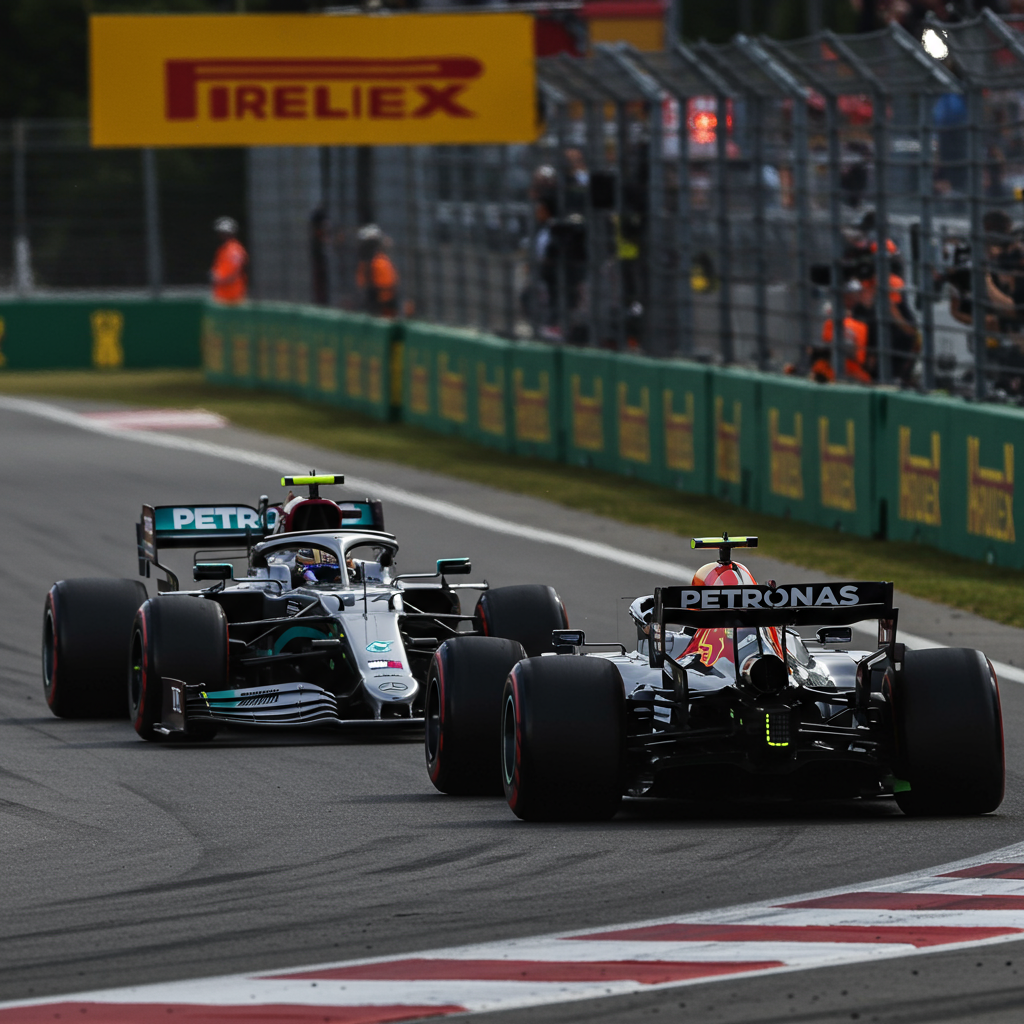In a stunning and widely debated decision, the Milwaukee Bucks recently executed a series of roster moves that have sent shockwaves through the NBA. Seeking to address perceived weaknesses, the team opted to waive and stretch the contract of superstar guard Damian Lillard while simultaneously signing center Myles Turner to a substantial four-year, $107 million contract. This high-stakes maneuver, intended to solidify their frontcourt alongside Giannis Antetokounmpo, is being dissected across the league, with many analysts questioning its strategic wisdom and long-term financial implications. It’s a gamble born from desperation, but does it move the Bucks closer to championship contention or further away?
The Cost of Panic: Unpacking the Bucks’ Risky Maneuver
The core of Milwaukee’s controversial offseason strategy lies in a drastic financial restructuring. To clear the necessary salary cap space for Turner’s significant deal, the Bucks chose to utilize the waive-and-stretch provision on Damian Lillard’s remaining contract. This accounting maneuver allows them to spread Lillard’s owed salary over a longer period, reducing the immediate cap hit. Instead of owing Damian Lillard approximately $113 million over the next two seasons, the Bucks are now committed to paying him roughly $22.5 million annually for the next five years.
This is an extraordinary measure for a player of Lillard’s caliber, effectively turning a massive future salary obligation into long-term “dead money” on the team’s books. This decision is widely seen as a direct consequence of the team feeling immense pressure after a disappointing season, particularly their defensive struggles and early playoff exit (which saw their defensive ‘panic meter’ hit a 10 out of 10 according to some reports after falling behind 2-0 to the Pacers). The urgency to “do something” appears to have overridden conventional long-term planning.
Evaluating the Myles Turner Acquisition
Myles Turner is undeniably a solid NBA center with valuable skills that theoretically could complement Giannis Antetokounmpo. He brings a combination of rim protection on defense and three-point shooting on offense, traits that made former Bucks center Brook Lopez a perfect fit next to Giannis for years. Turner averaged 17.5 points, 6.9 rebounds, and 1.9 blocks for the Indiana Pacers last season, demonstrating his capability as a two-way big man.
However, questions linger about his fit and whether his impact justifies the financial cost and the drastic measures taken to acquire him. While Turner can shoot the three, his effectiveness is significantly higher when playing alongside an elite playmaker. Data shows his three-point percentage dropped considerably when he wasn’t playing with Tyrese Haliburton. Who will consistently create those opportunities for him in Milwaukee now?
Furthermore, Turner’s performance in critical moments has faced scrutiny. While a valuable player for the Pacers during their unexpected run to the NBA Finals, he did not consistently finish important games. Against top competition in the playoffs, he showed defensive vulnerabilities, struggling to contain players like Shai Gilgeous-Alexander on the perimeter and Karl-Anthony Towns in the post, as highlighted in analysis of those series. Paying over $100 million for a player who isn’t guaranteed to be on the floor in crunch time is a significant investment.
The Fallout from Waiving Damian Lillard
The decision to waive and stretch Damian Lillard carries profound consequences beyond just clearing immediate cap space. It burdens the team with a substantial cap hit for half a decade, well into what is expected to be the tail end of Giannis Antetokounmpo’s prime and potentially beyond Myles Turner’s tenure with the team. This severely limits the Bucks’ flexibility to make future moves, sign complementary players, or retool the roster around Giannis.
Losing a future Hall of Fame point guard, even one whose fit wasn’t perfect and who struggled with health late last season (including a DVT blood clot), leaves a gaping hole in the roster. As the original article notes, the Bucks are still without a starting point guard. While one report indicated Giannis was on board with the Turner addition, another suggested he was displeased with the decision to waive Lillard, understanding the crippling impact on the team’s future maneuverability. The ability to retain financial flexibility is a key asset in the modern NBA, something teams like the Houston Rockets are prioritizing even with ample trade capital, and Milwaukee has now voluntarily forfeited a large portion of theirs.
A Deeply Flawed Roster Facing Stiff Competition
Despite this major transaction, critics argue the Milwaukee Bucks remain a deeply flawed team. They’ve addressed the center position with Turner but still lack a high-level starting point guard capable of running the offense and creating shots consistently, particularly when Giannis is off the floor. Running back a version of last season’s roster, minus Lillard and with a more expensive, slightly different version of Lopez, is unlikely to dramatically change their fortunes.
The Bucks did make some other modest signings this offseason, bringing back Bobby Portis and adding players like Taurean Prince, Gary Trent Jr., and Kevin Porter Jr. on team-friendly deals. While potentially savvy, these moves don’t move the needle for a team that could realistically find itself fighting for a play-in spot in a competitive Eastern Conference. Before the Lillard waiver, the Bucks possessed their non-taxpayer midlevel exception, a tool that could have been used to acquire valuable players like Al Horford or Deandre Ayton without incurring the massive long-term financial weight now attached to the team. That opportunity is now gone.
Eastern Conference Outlook
Looking at the Eastern Conference landscape, several teams appear poised to compete at a higher level than the current iteration of the Milwaukee Bucks. Cleveland, New York, Orlando, Atlanta, and Detroit have all made moves or possess young cores that position them favorably. Philadelphia could also be argued to belong in that tier depending on how their offseason plays shape up.
While the dust hasn’t settled completely across the league, the perceived risk versus reward of the Bucks’ moves leans heavily towards risk. Betting on Myles Turner as a potential savior, especially at this cost and with the sacrifice of future flexibility, seems “woefully off base” to many analysts.
The Pacers’ Perspective
It’s worth briefly considering the Indiana Pacers’ side of this transaction. They chose not to match the offer for Myles Turner, a decision that drew criticism, particularly after their surprising run to the NBA Finals. Some argue they should have paid the luxury tax to keep a key piece of their success.
However, the Pacers’ decision might be more practical than principled. With Tyrese Haliburton suffering a ruptured Achilles injury that impacts their immediate trajectory, and Turner approaching age 30, committing significant long-term money might not have aligned with their slightly altered timeline. While Turner was important to their success and had moments of strong play (including showing up defensively when needed), his playoff struggles in certain matchups were evident. Losing him isn’t catastrophic for Indiana; they were better with him, but they have a young core and assets to pivot.
The Unsettling Long-Term Picture
The biggest concern for the Milwaukee Bucks and their fanbase is the potential impact on Giannis Antetokounmpo’s future. Giannis is one of the greatest players in the world, but even he cannot carry a team with significant roster imbalances and crippling financial constraints to a championship alone. The decision to waive Lillard not only removes a talented teammate but also ties up $22.5 million in cap space annually that would be invaluable if the team needed to retool or, in a worst-case scenario, if Giannis were to eventually request a trade.
The move feels less like a strategic pivot and more like a desperate attempt to maintain competitiveness without a clear path forward. It’s been compared to shattering the “break in case of emergency” glass to grab a firehose after the building has already been incinerated – a panicked, ill-timed response to a problem that requires more measured solutions. The waive-and-stretch of Lillard, specifically, stands out as one of the more ill-advised decisions in recent NBA history due to its magnitude and long-lasting consequences. Only time will tell if this gamble pays off, but the immediate analysis suggests the Milwaukee Bucks have just made one of the most expensive and riskiest moves in NBA history.
Frequently Asked Questions
What were the key financial details of the Bucks’ recent roster move involving Lillard and Turner?
To sign Myles Turner to a four-year, $107 million contract, the Milwaukee Bucks utilized the waive-and-stretch provision on Damian Lillard’s contract. This maneuver spreads Lillard’s remaining salary over a longer period. Effectively, the Bucks are now obligated to pay Lillard approximately $22.5 million per year for the next five seasons, instead of the original $113 million owed over just two years. This creates significant long-term “dead money” on their salary cap.
Why is the Bucks’ move considered a ‘panic move’ and potentially harmful to the team?
The move is labeled a ‘panic move’ because it appears driven by desperation following a disappointing season and early playoff exit, rather than a clear long-term strategy. By waiving and stretching Lillard, the Bucks acquire a player (Turner) but incur substantial, long-term salary cap limitations that severely restrict their ability to build or retool the roster around Giannis Antetokounmpo in the future. It addresses a positional need (center) at a high cost while failing to solve another key issue (starting point guard) and sacrificing crucial financial flexibility.
How did Myles Turner perform before joining the Bucks, and why did Indiana let him go?
Myles Turner was the starting center for the Indiana Pacers, known for his shot-blocking and ability to space the floor with three-point shooting, particularly when playing with an elite playmaker like Tyrese Haliburton. However, he faced questions about his consistency and playoff performance, sometimes struggling in key matchups. Indiana chose not to re-sign him, a decision partly influenced by Tyrese Haliburton’s serious injury impacting their immediate timeline and potentially aligning with a desire to avoid the luxury tax while pivoting to future moves with their young core.




